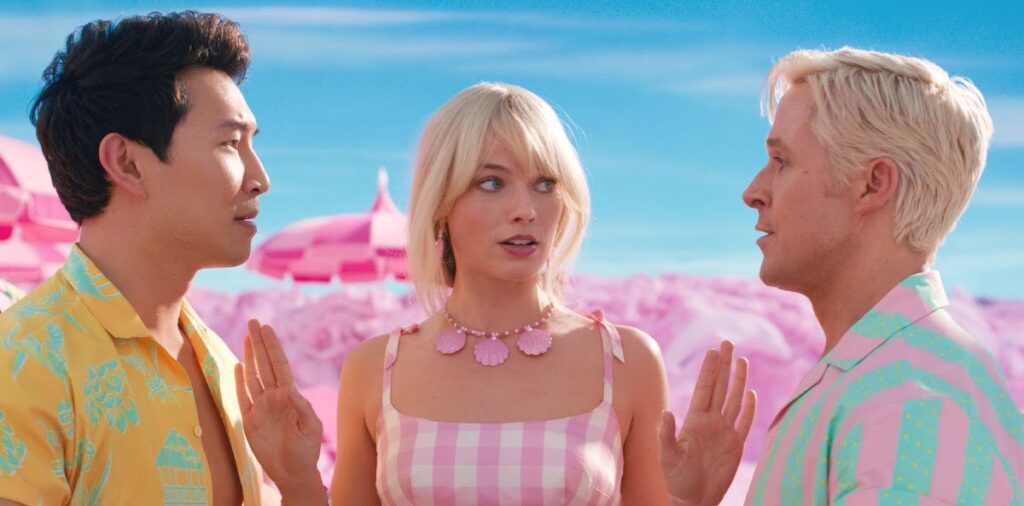
After more than 35 years of operation, TBI is closing its doors and our website will no longer be updated daily. Thank you for all of your support.
TBI Weekly: What Barbie teaches us about branded content
TBI’s resident branded content expert, Luci Sanan, explains what the global success of Barbie tells us about branded content and its role in the future of TV.
Let’s all be more Barbie.
I was at a music festival at the weekend and adult rock fans were wearing Barbie T-shirts. I had pink nails.
Like it or not, the Barbie movie is the epitome of cultural shift, curated by a brand; storytelling through the medium of brilliant entertainment
Barbie, the toy I wouldn’t let my daughter have because I felt it embodied patriarchy and the unrelenting pressure on women, is cool again.
Yes, she can have a Barbie if she wants one now.
If you haven’t seen it, stop reading and go watch it right now. It’s funny. And, it represents profound change, a new age of feminism on screen.
Like it or not, the Barbie movie is the epitome of cultural shift, curated by a brand; storytelling through the medium of brilliant entertainment.
You don’t have to look at Barbie to see that the relationship between brands and consumers has shifted radically. No one wants to – no one must watch – an advert. Brands have always been integral to the funding of content, so it baffles me that this industry can find it so hard to accept advertisers as a dignified piece of the puzzle.
OK, so not all brands have the history and cultural awareness, or budget of Mattel, yet all brands have the ability to create emotional connection through content, whether they are on screen of not.
I repeat myself when I say that the brand is not always in the content – it’s about the brand affinity and their story telling.
It’s about the off-screen assets and tie-ins, but most importantly the impact on audience behaviour.
Can it be about ROI? Sometimes, but brands shouldn’t be funding entertainment purely with that in mind as it’s a minefield to measure. You’ve got to have some faith.
Motoring on
Can brands make money from the content itself? Of course, if done right (ask me) but honestly it usually doesn’t wash its face and shouldn’t be one of the major reasons for financing branded entertainment.
Netflix’s Drive To Survive has grown the US F1 audience by about 10% (Nielsen). It joins an increasingly long list of advertisers telling stories which probably drive business results.
REI (US outdoor store) is creating moving films with their Co-op Studios, which are being selected at major festivals and winning awards (The Right To Joy is worth a watch). Nike, Gucci, Red Bull, Liquid Death, NFL… the list goes on.
They are all generating engagement with an audience and telling a story: a story that develops an emotional connection with the audience, makes them cool (again) and (probably) drives sales.
Slowly, brands (well, some brands) are coming to the realisation that they don’t need product placement in everything – maybe not at all – to drive that behavioural change and deliver results.
P & G are a great example of this also, with the Trevor Noah hosted doc Tipping Point and their Sundance-launched Queen Collective films produced to ‘shine a light on under-represented voices, untold stories and acts of good that our brands support’.
This leads me to another important point as to why brands fund content (even when they are not in it) – and this is CSR (corporate social responsibility). Brands need to support causes that matter to their audience.
Take John Deere. The brand has a deep history of supporting the farming community and recently joined forces with the National Volunteer Fire Council in the US for a new documentary film, Odd Hours, No Pay, Cool Hat.
The film highlights stories of rural volunteer firefighters from across the country and paints a portrait of these brave individuals who serve their communities, with the aim of recruiting more volunteers to a dwindling but essential service. And, the only tractor in the movie is not a John Deere one!
Making a success of branded content
So what makes brand entertainment successful, then? Is it reaching a wide audience? Is it the (increasingly more measurable) impact on consumer emotion and behaviour? Is it awards, PR and prestige? Or is it social impact?
Slowly, some brands are realising that they don’t need product placement in everything – maybe not at all – to drive behavioural change and deliver results
Well, depending on the brand, its goals and how much the CFO is asking for an idea of ROI, it’s often a mixture of all of these.
However, my interest remains grounded in ensuring that producers, media partners and advertisers share a common goal when entering into such projects – and that adequate and realistic distribution and measurement is achieved – and of course that everyone is happy with the deal.
And as brands are slowly coming round to the idea of not having their logo splashed all over the screen, broadcasters and streamers are coming round to the idea that it doesn’t matter if the content was funded by a brand directly (or indirectly, as most content is anyway) – so long as it’s what they want, so long as it’s good.
So let’s embrace the fact the brands are curating some of the most popular entertainment out there, and be more Barbie.
Luci Sanan runs independent consultancy firm 53 Degrees North Media, set up to provided strategic and commercial consultancy producers, media owners and brands. She has previously worked for The Story Lab, DRG, Banijay International and Small World IFT.





